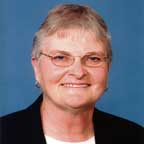Jeanne Buysee - American Family Insurance

Burning wood is one of the most hazardous ways to heat your home. According to the U.S. Consumer Product Safety Commission, home heating equipment causes nearly one third of all home fires. Wood-burning stoves cannot be completely controlled with a wall thermostat. Fuel cannot be cut off by flipping a switch or turning a valve. Wood stoves get hotter than conventional furnaces and produce hotter exhaust gases. Wood requires more physical work and frequent cleaning, and it generates large volumes of waste. If you are not willing to do the work and become an informed wood fuel user, you risk the safety of your home and family every time the stove is lit. Your insurance agent can provide you with information on the safe use and installation of this supplemental heat source.
Brightly burning candles help to make the holidays special, but they are major fire hazards which come with a lot less work but need just as much attention. The National Fire Protection Association reports that in 2004 there were 17,200 fires caused by candles which required fire department involvement. Those fires resulted in an estimated 200 civilian deaths and $200 million in property damage.
The peak day of the year for home candle fires is Christmas, with Christmas Eve and New Year’s Day right behind as the next two deadliest days. Insurance companies can insist on the proper installation of wood stoves, but candle use is much more difficult to control. The best thing is to be aware of and follow candle safety tips: extinguish candles when leaving a room, keep them at least one foot away from flammable items such as clothing, books and curtains, keep wicks trimmed to one-quarter inch and if you are a senior citizen, you might consider forgoing candles on your birthday cake this year! TPW
